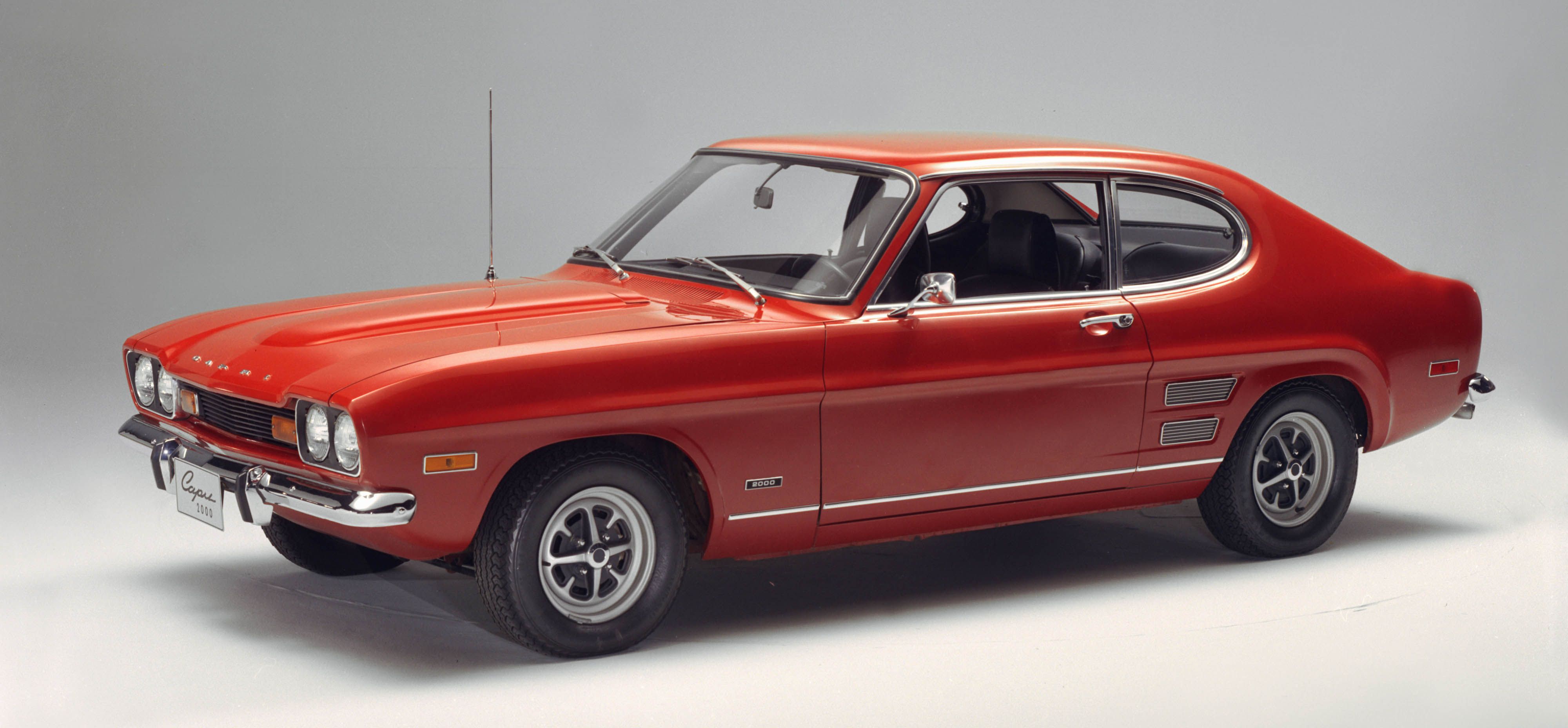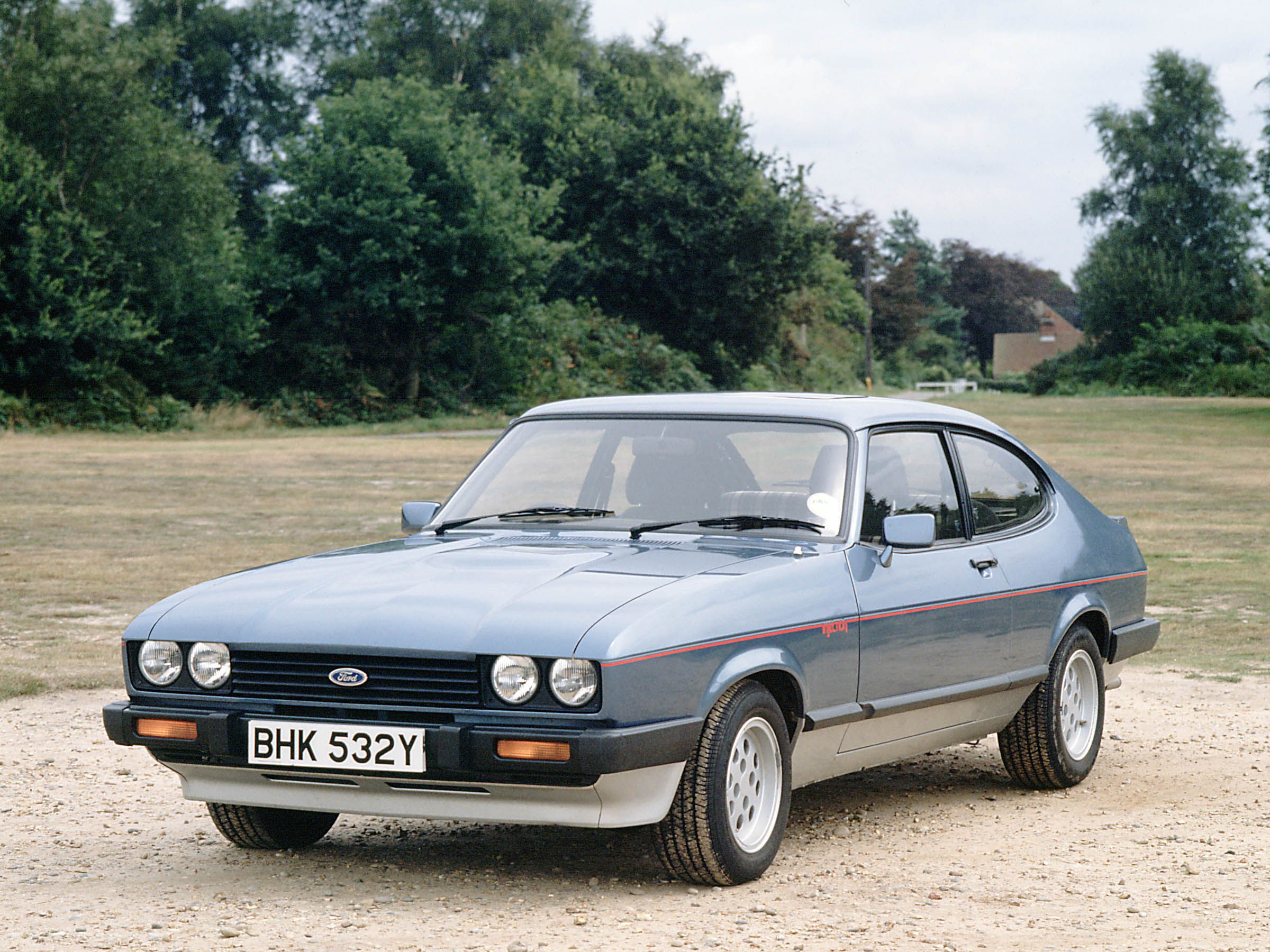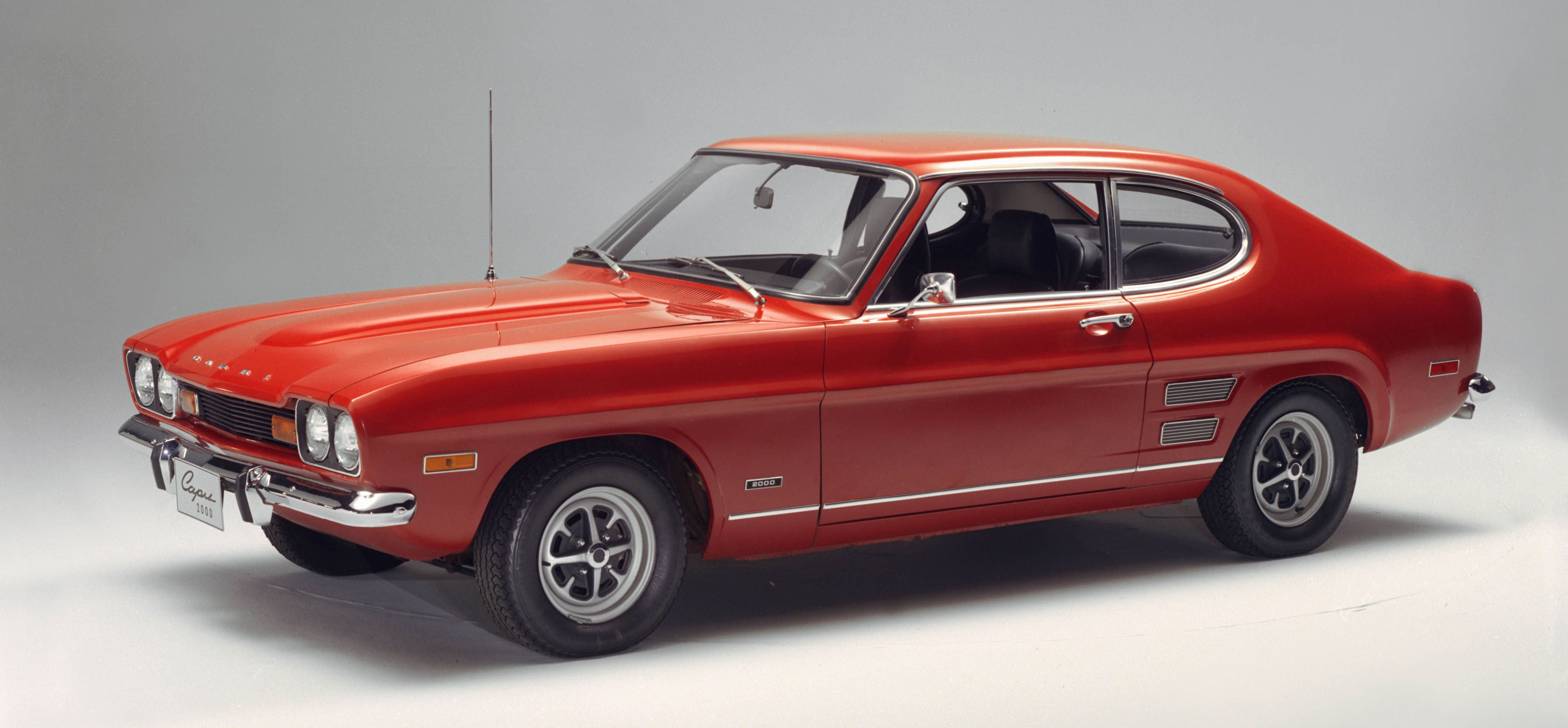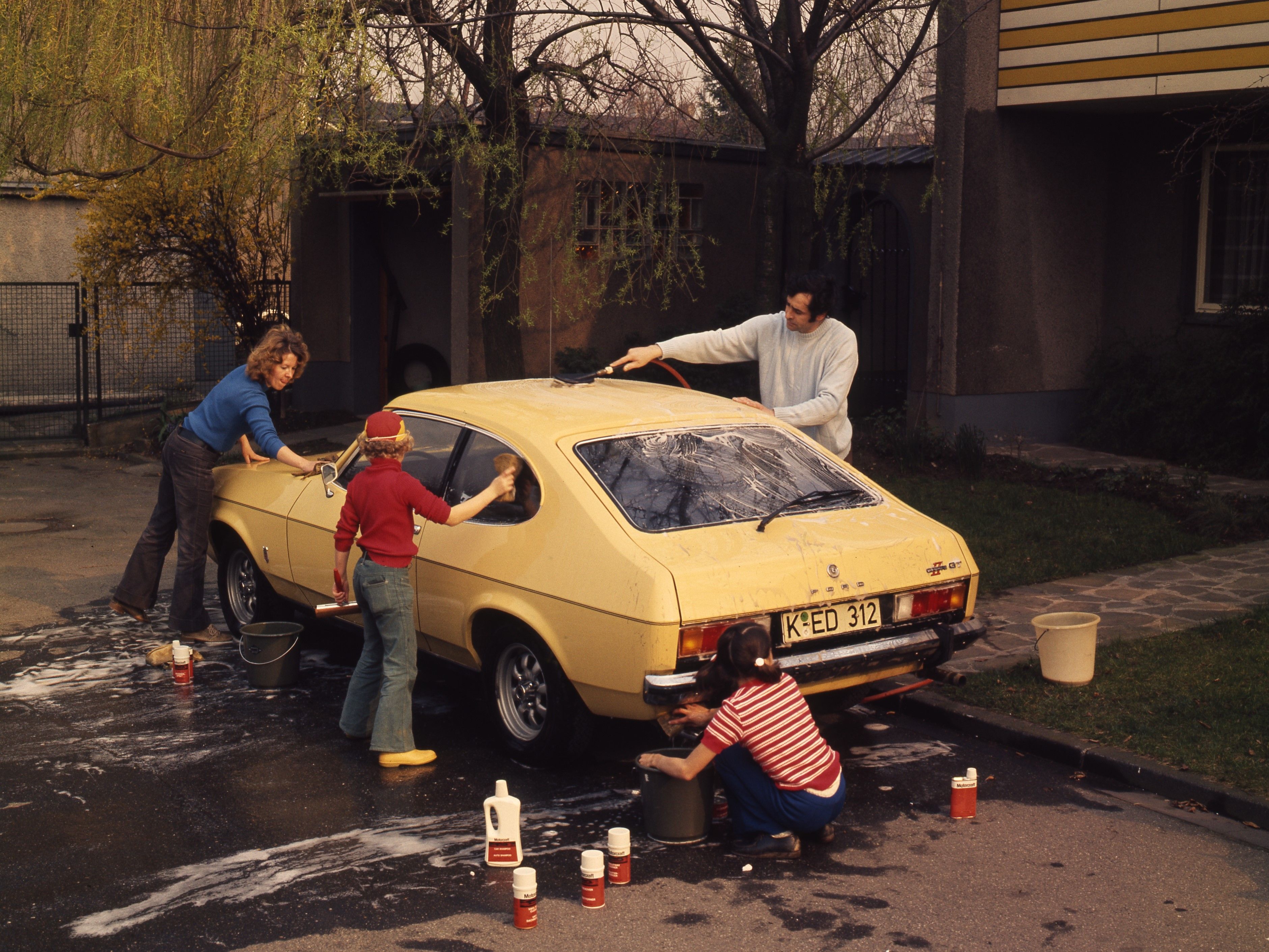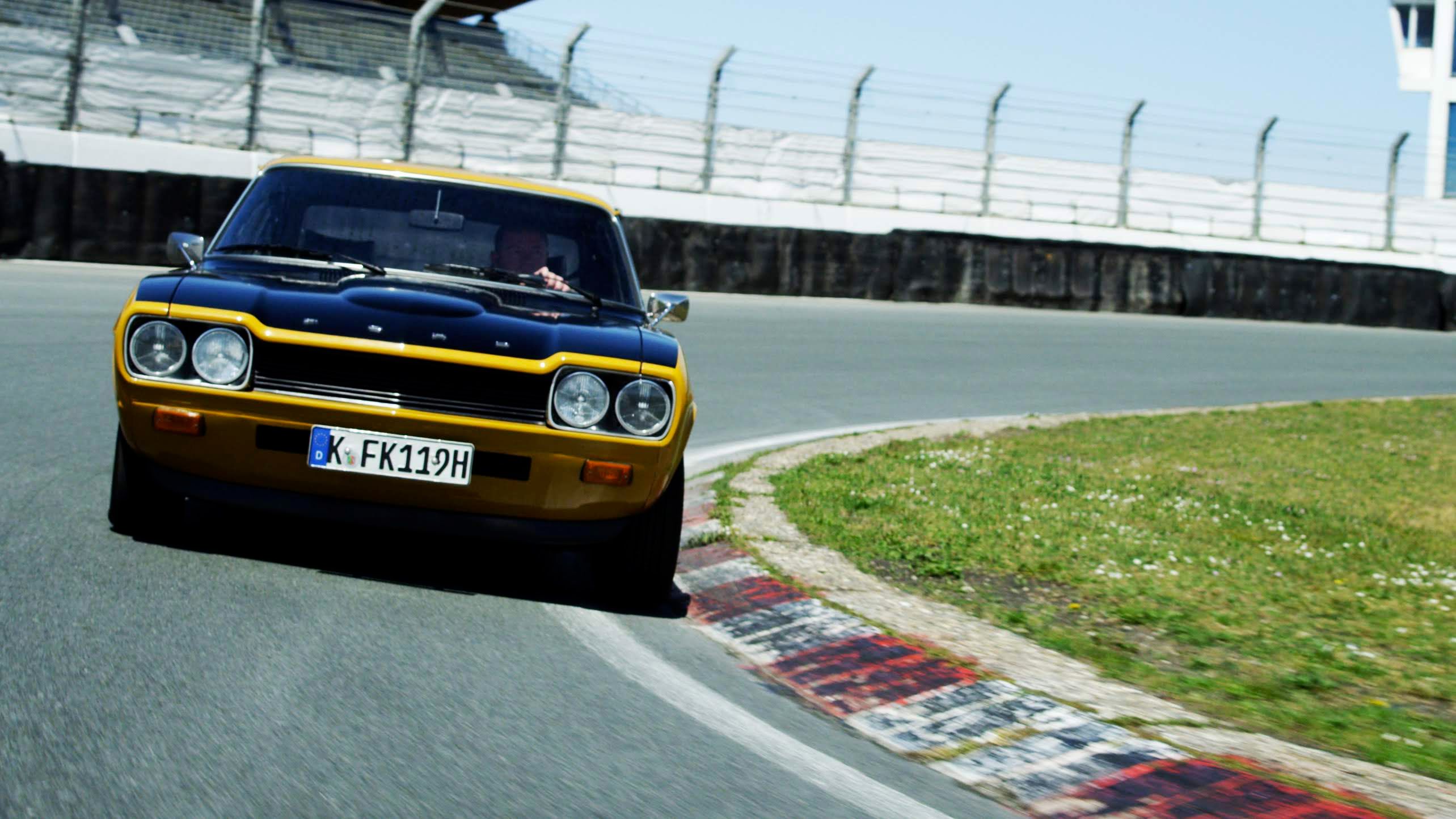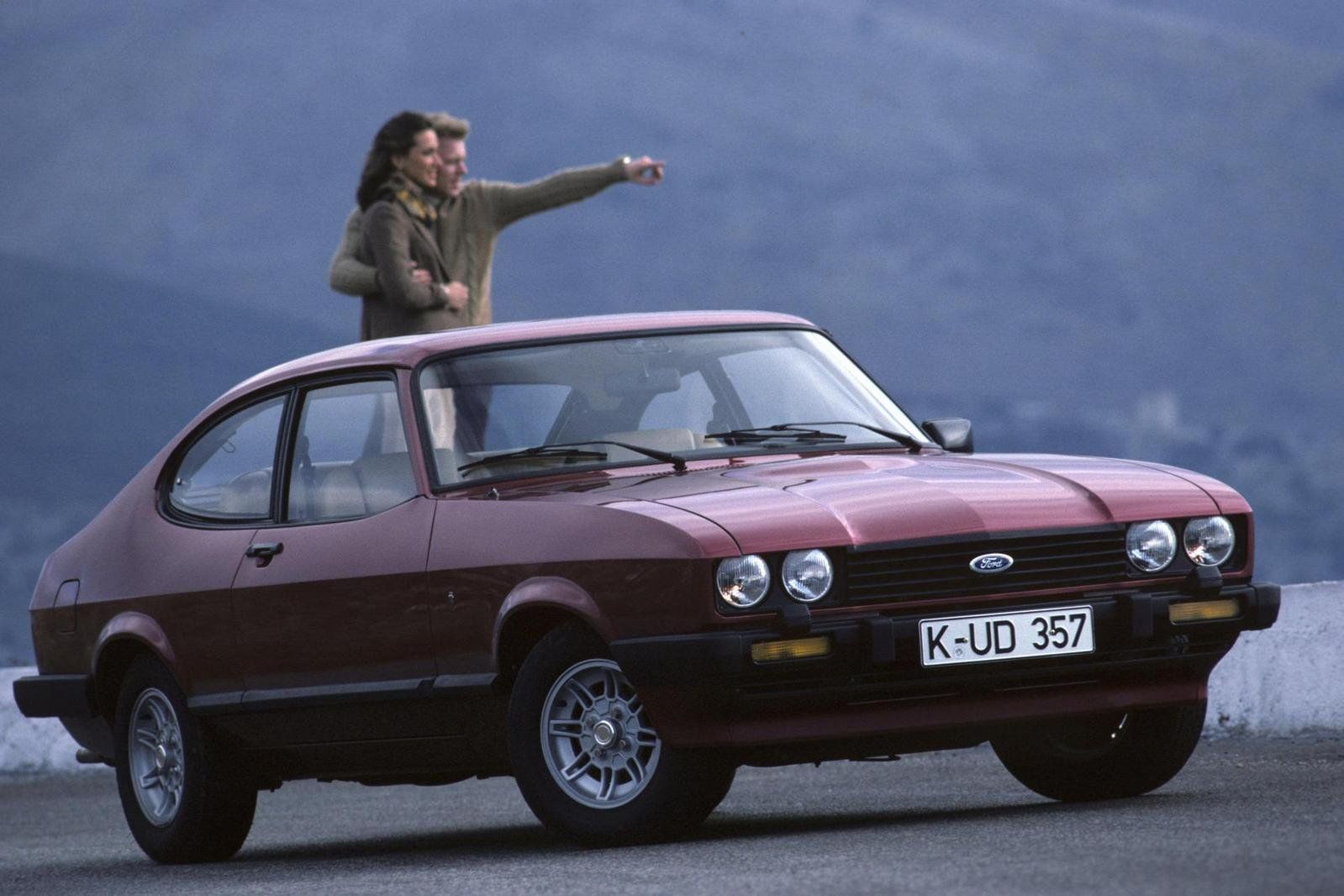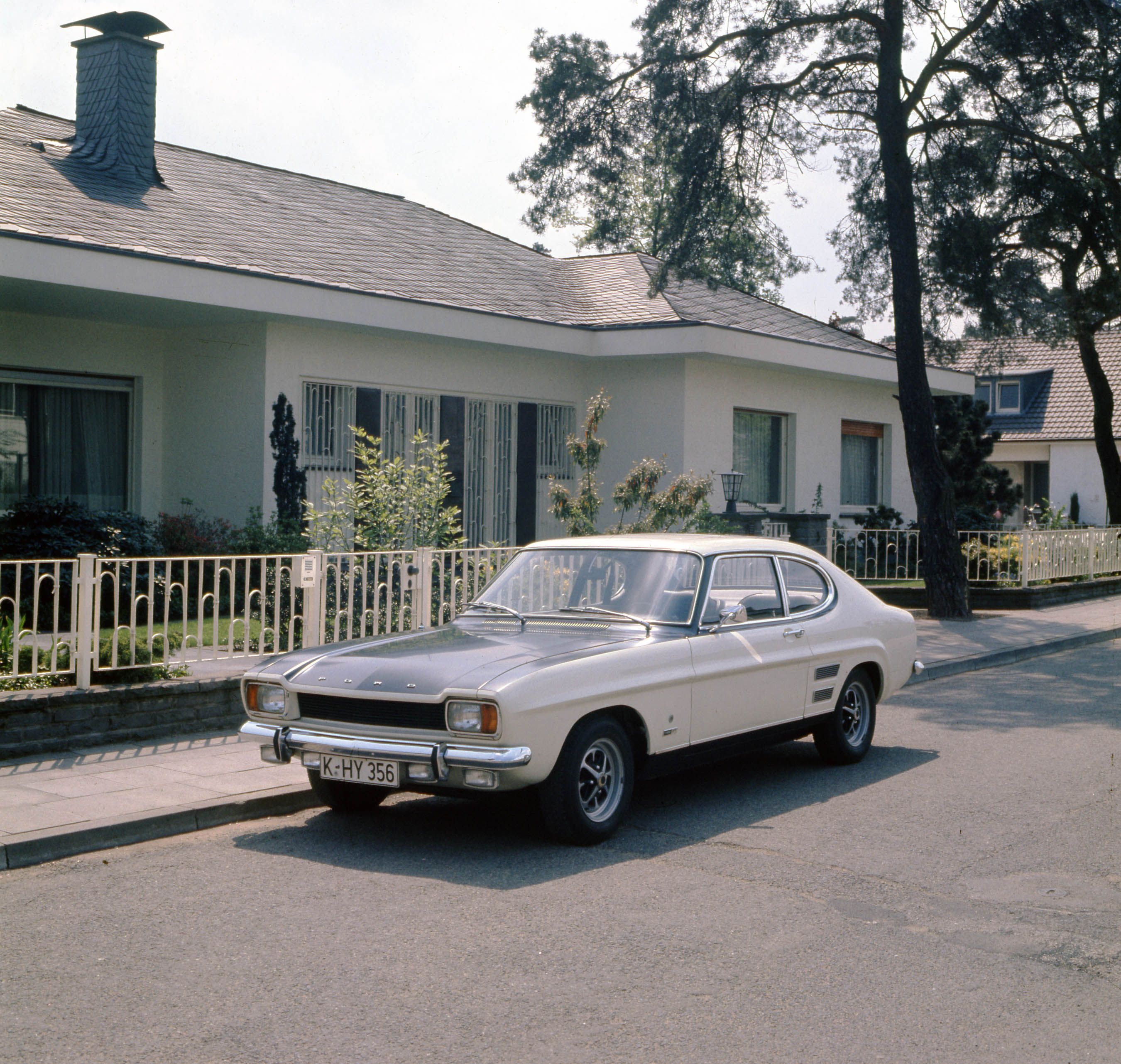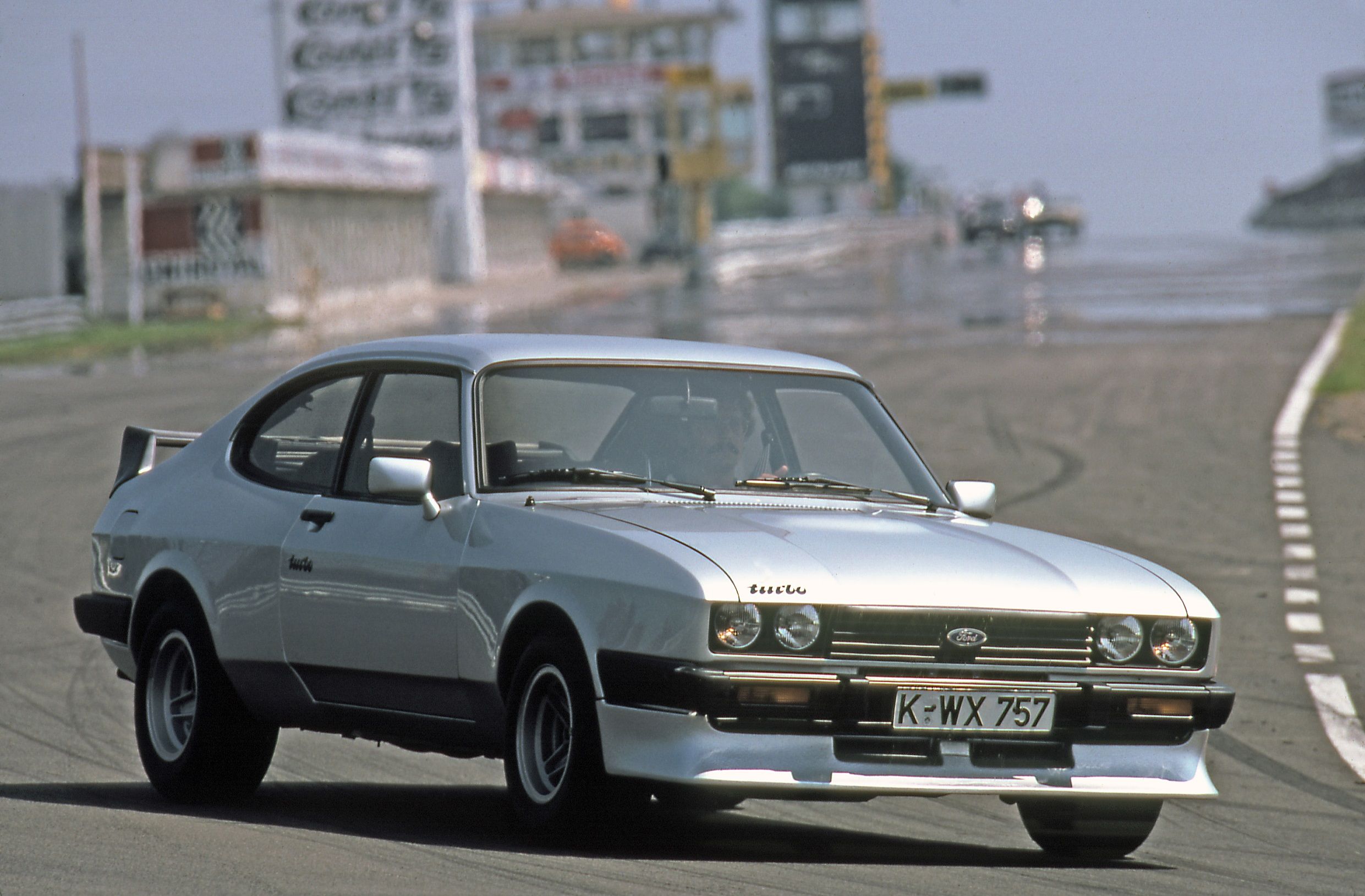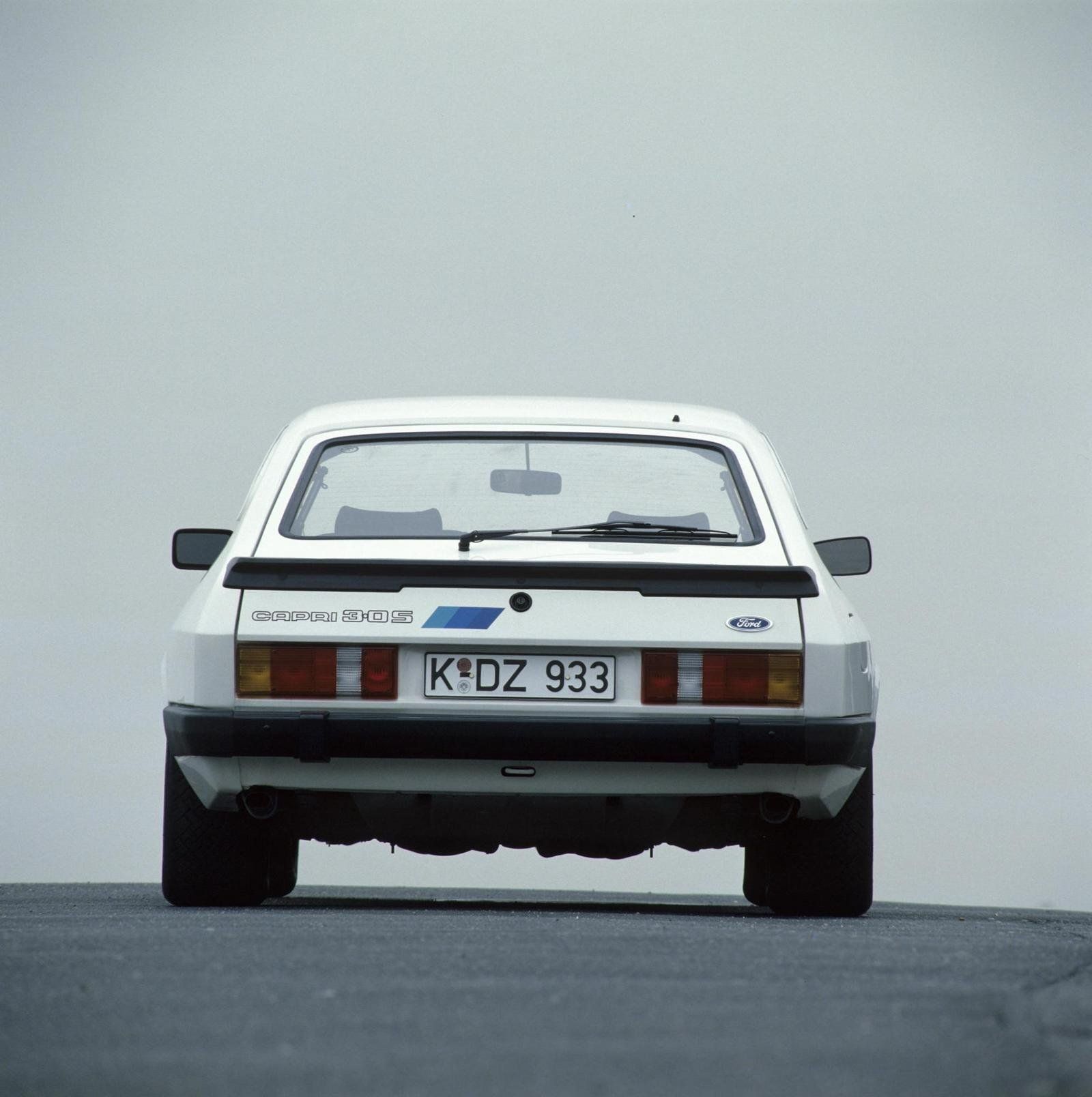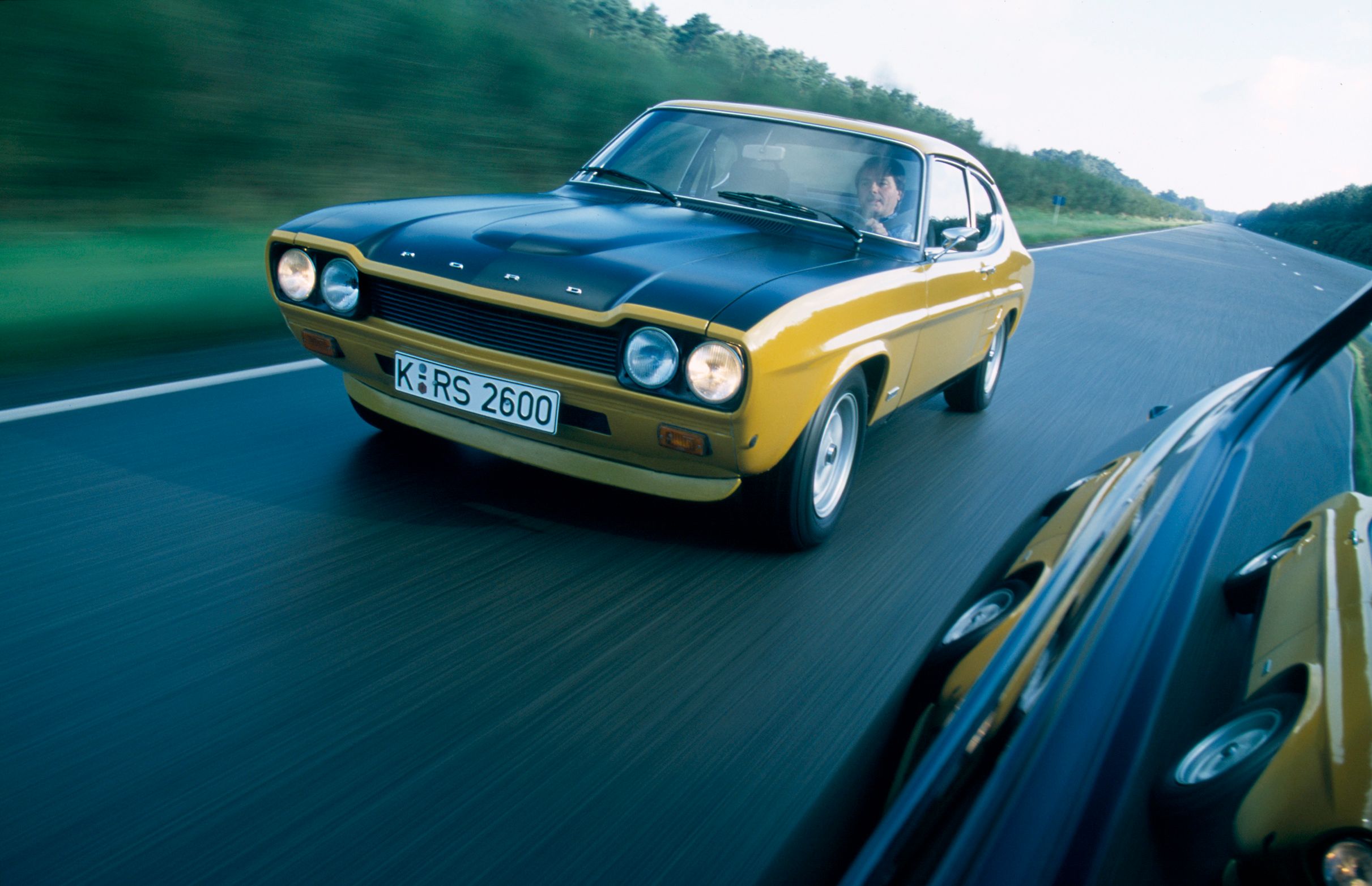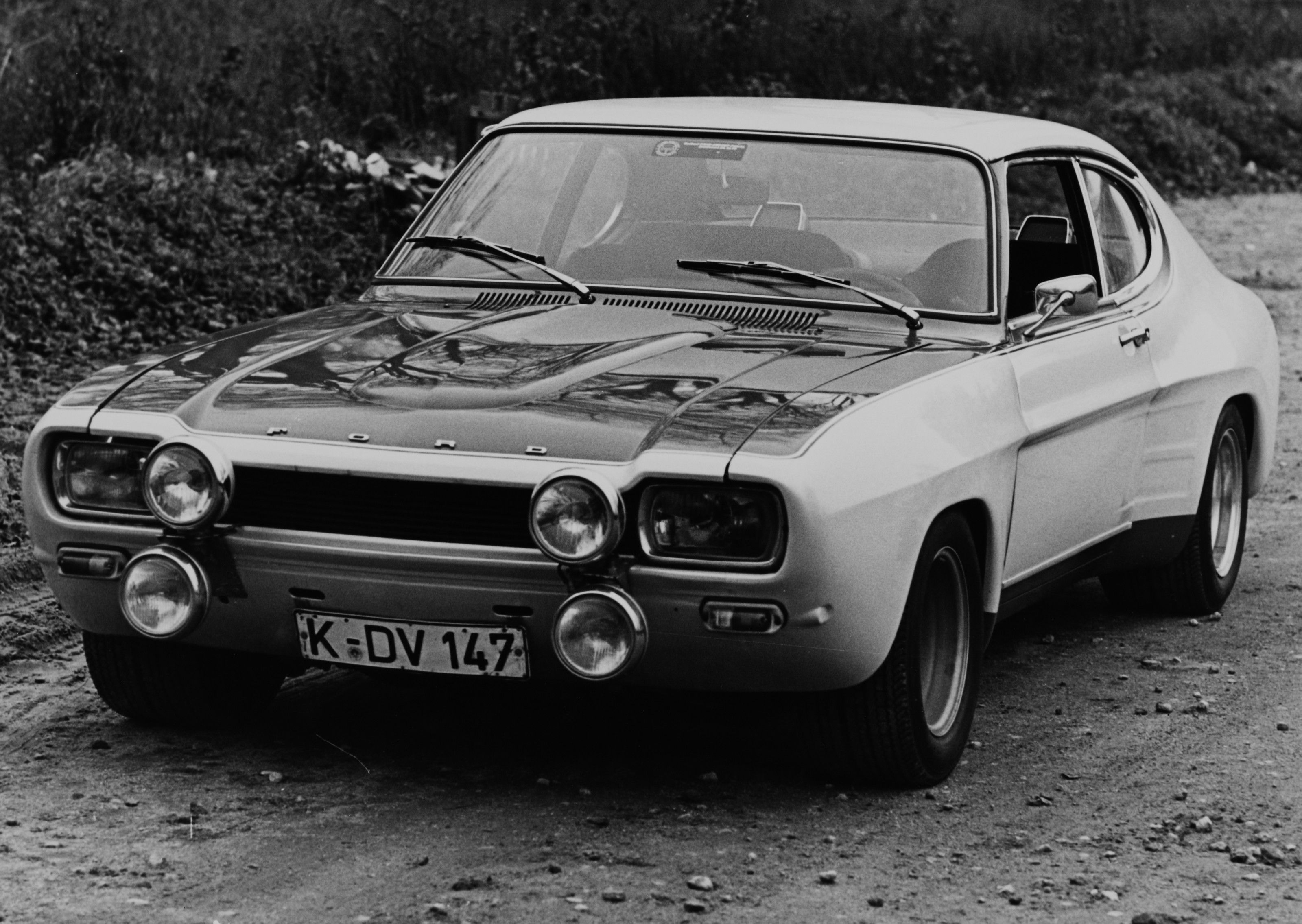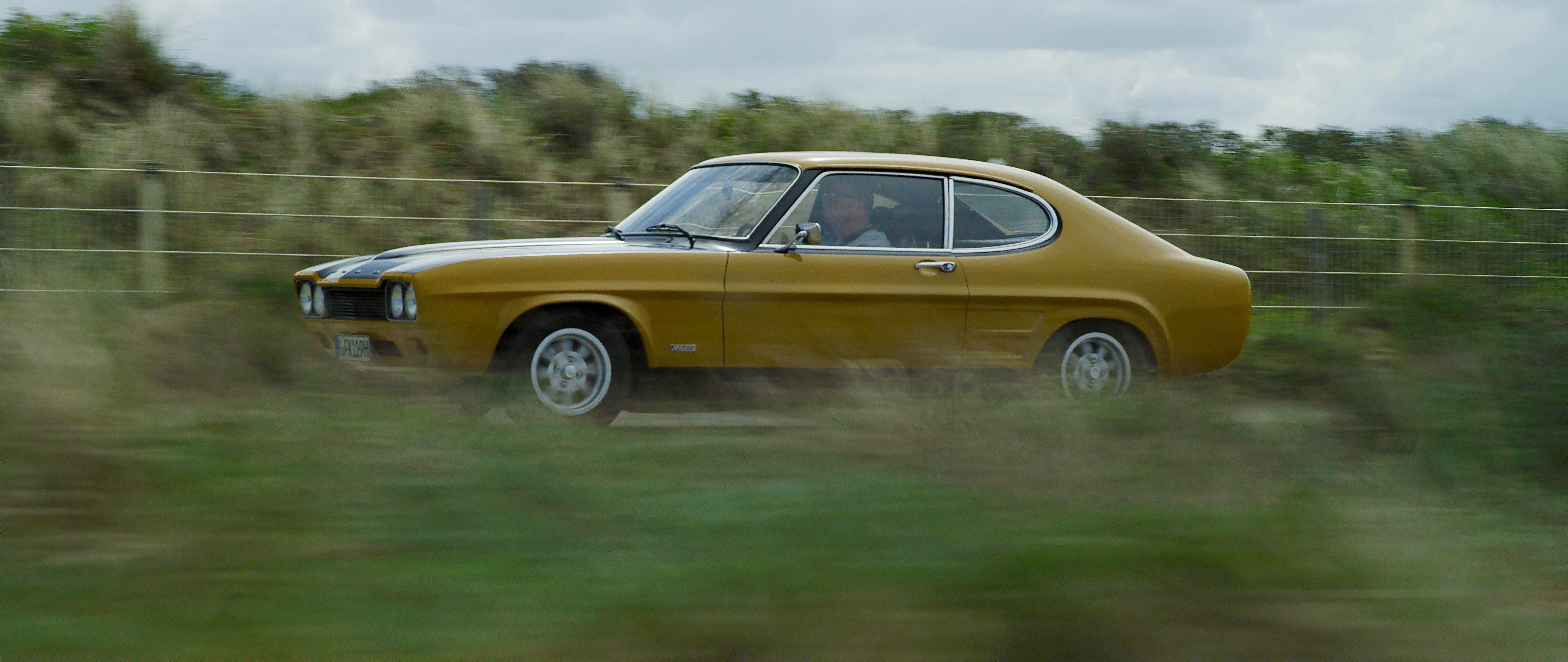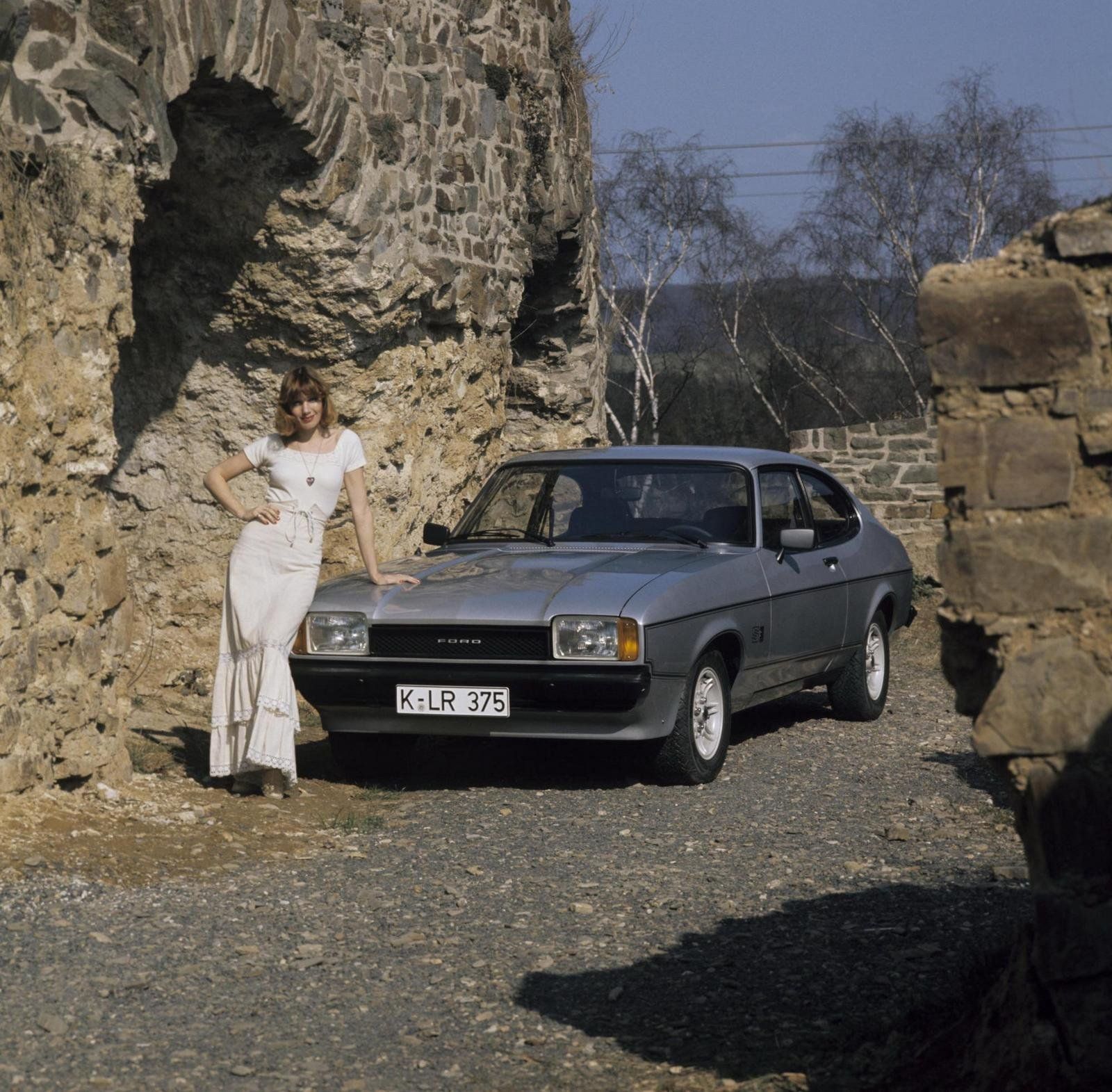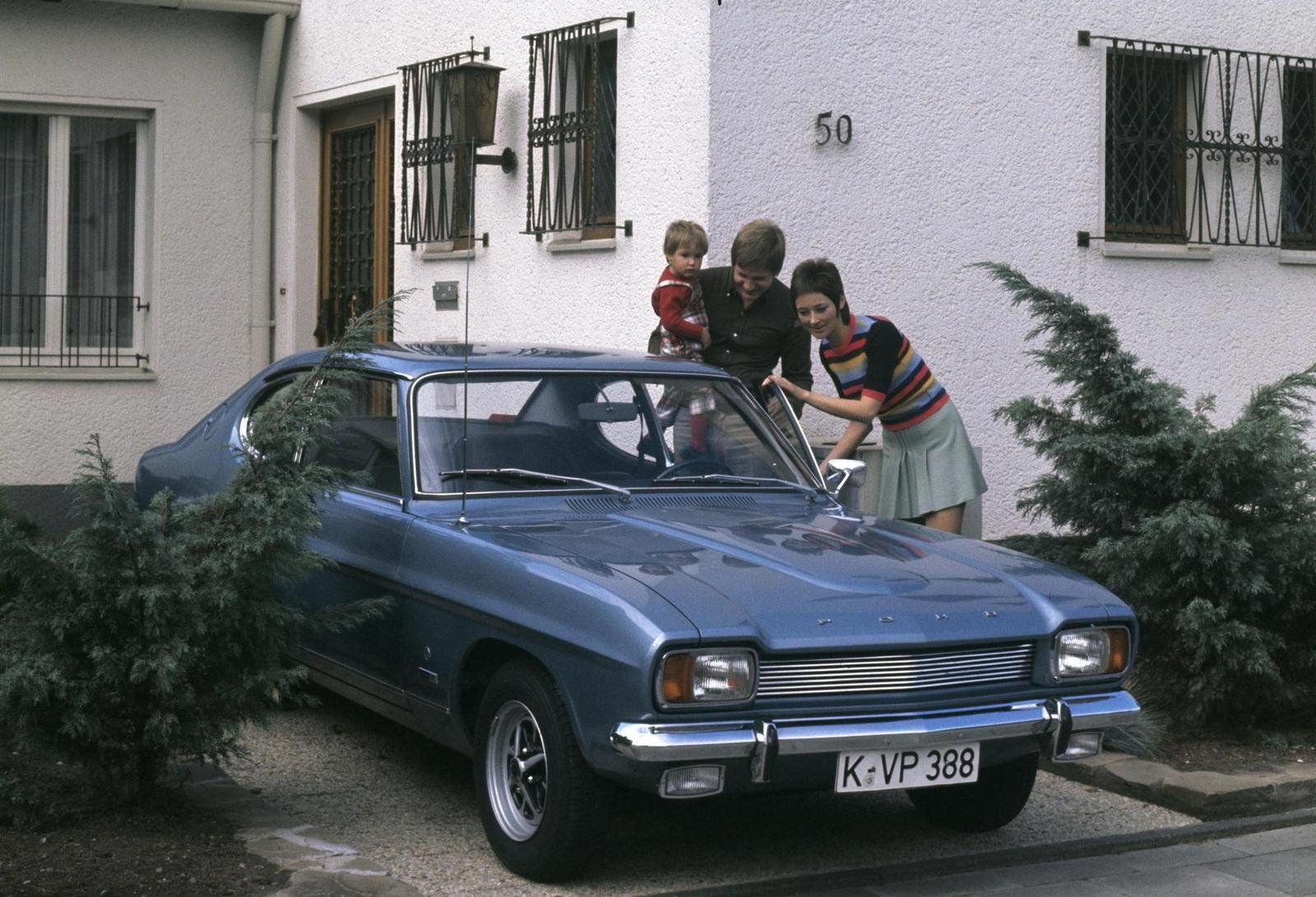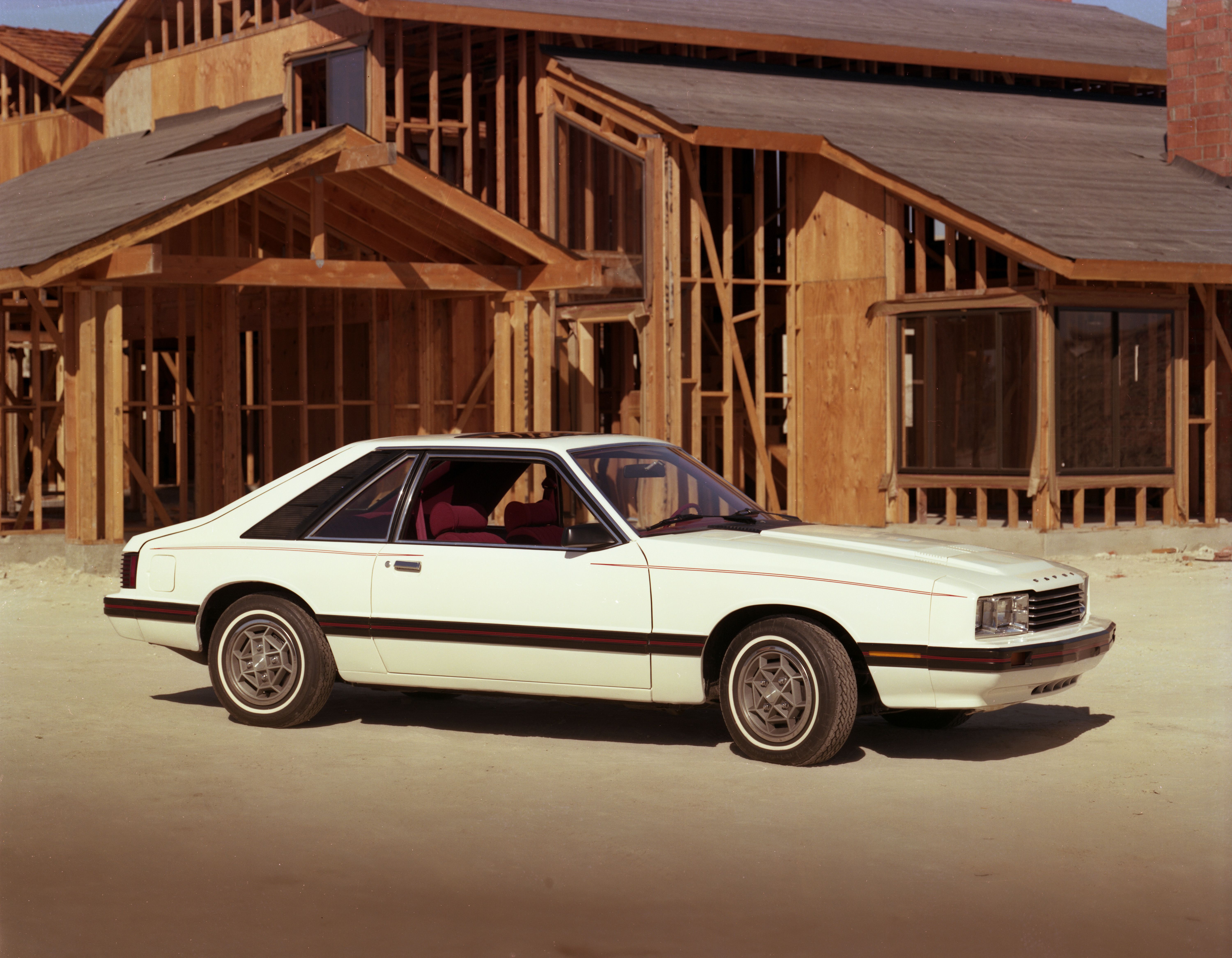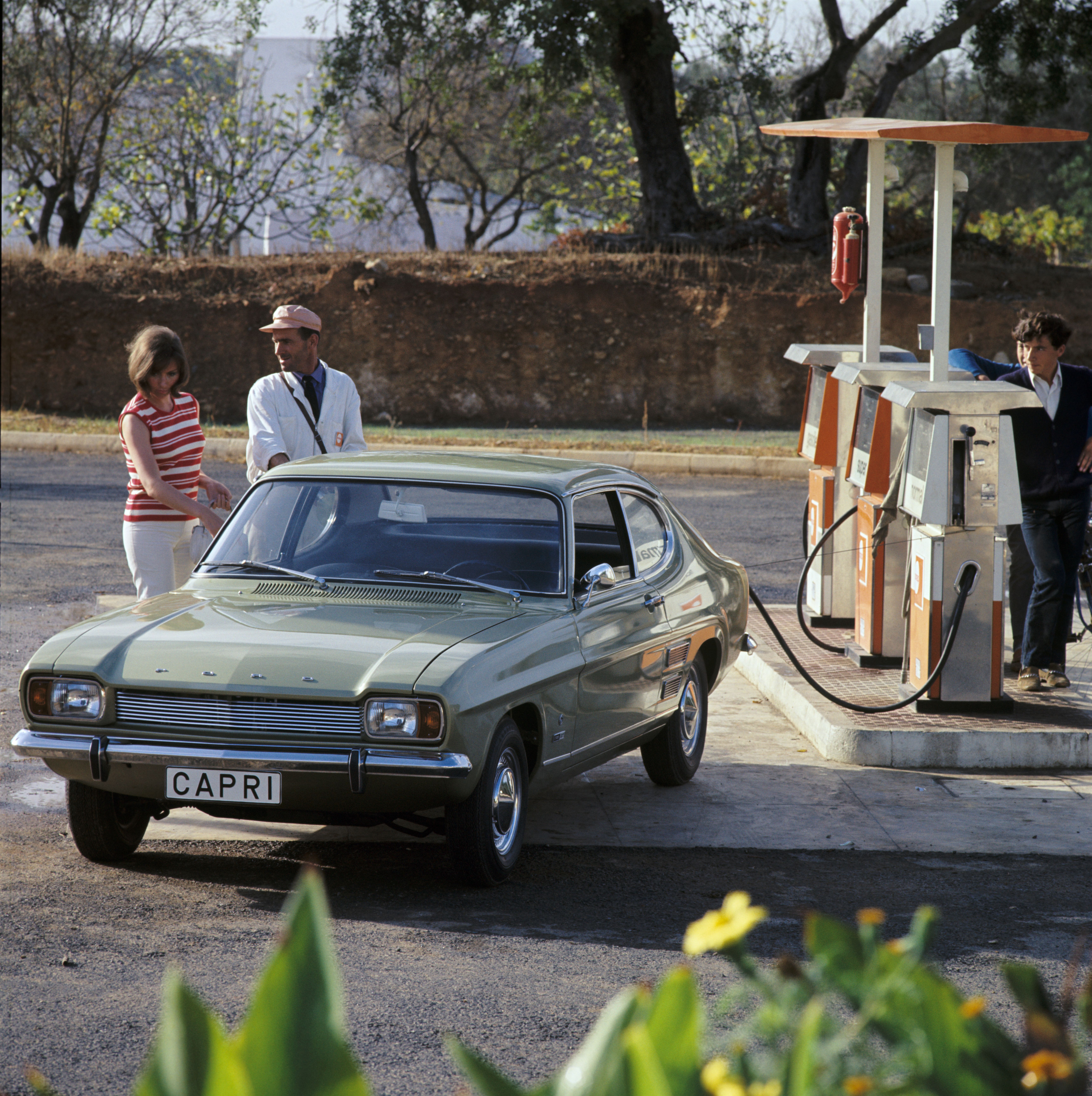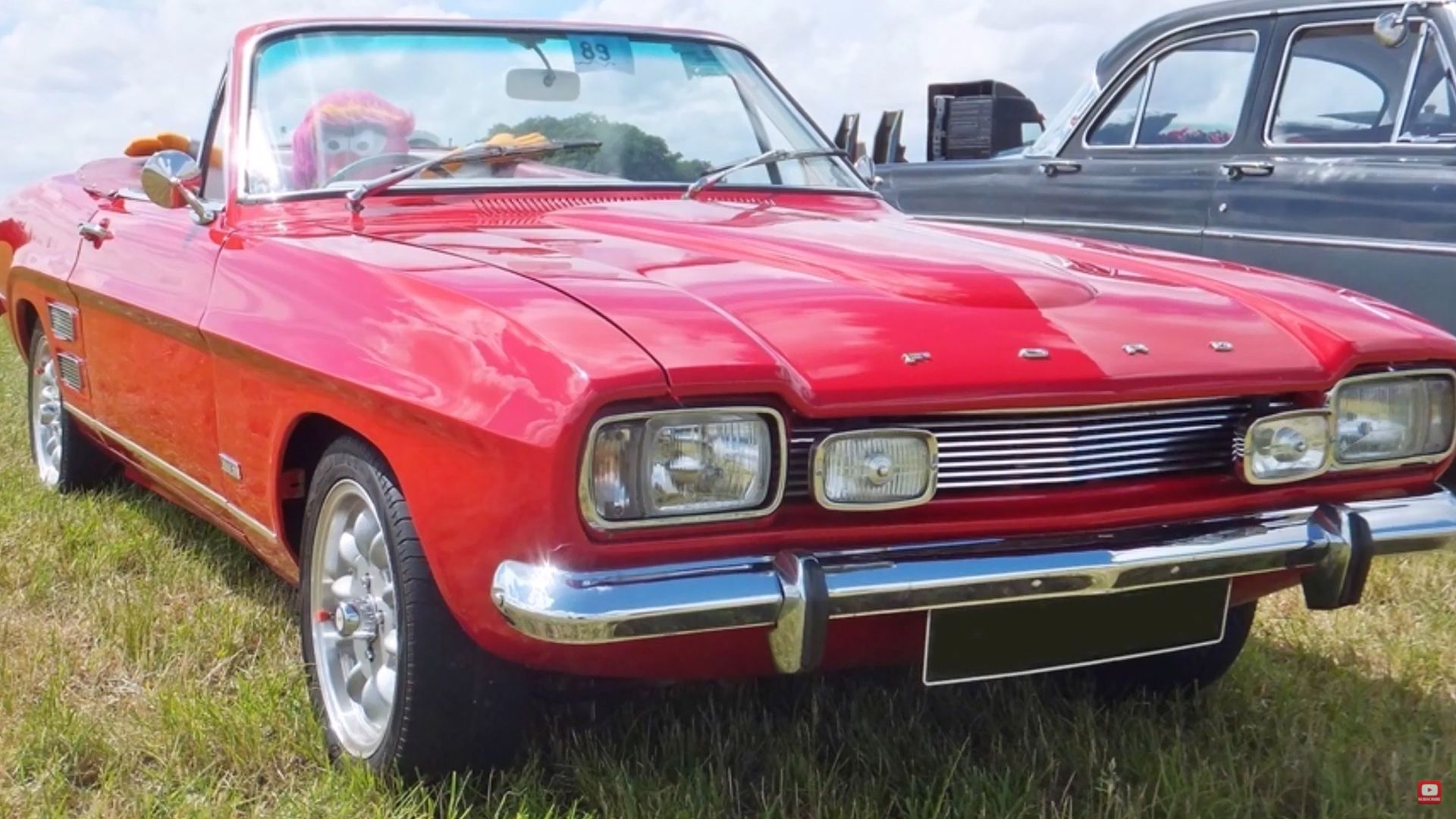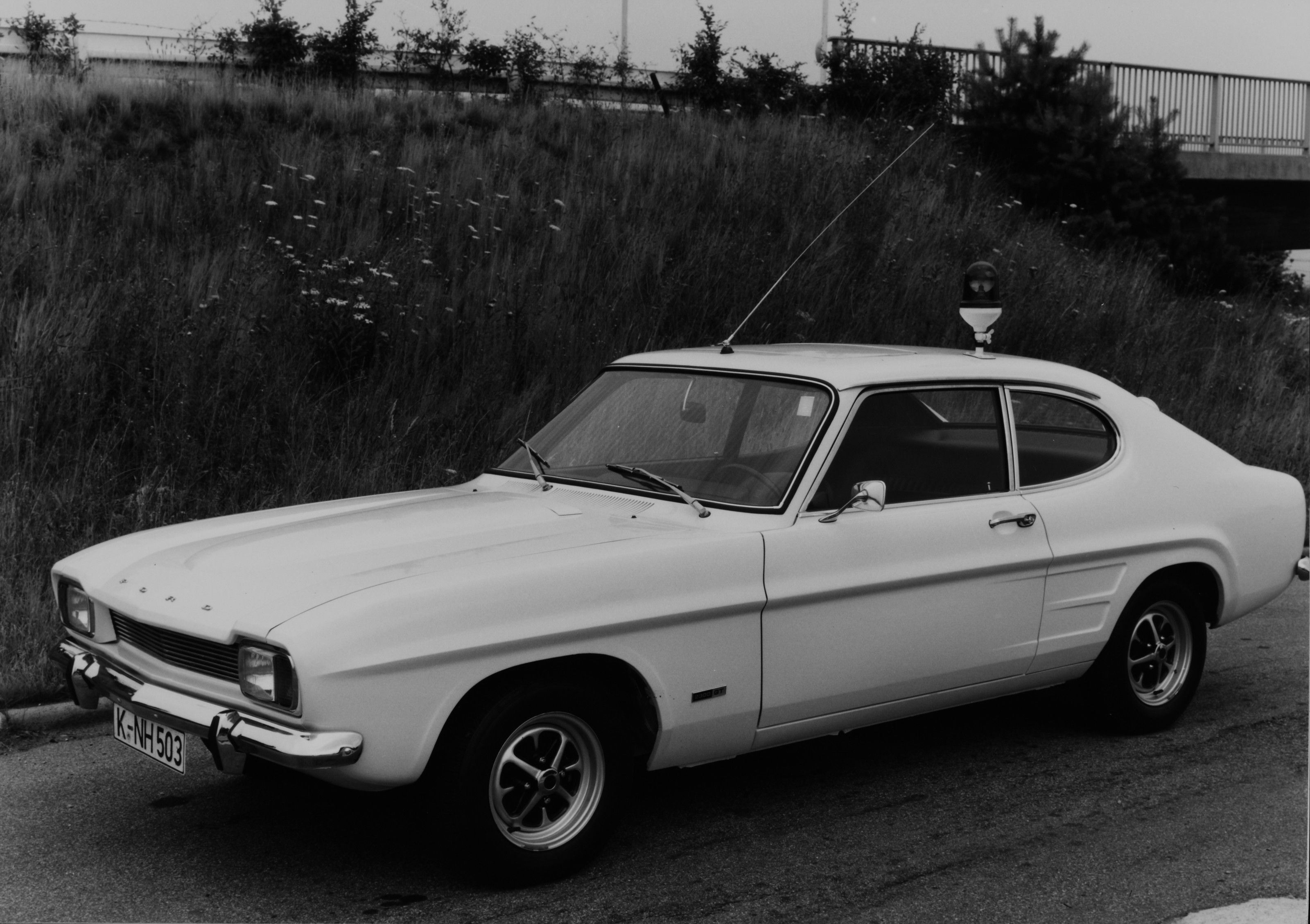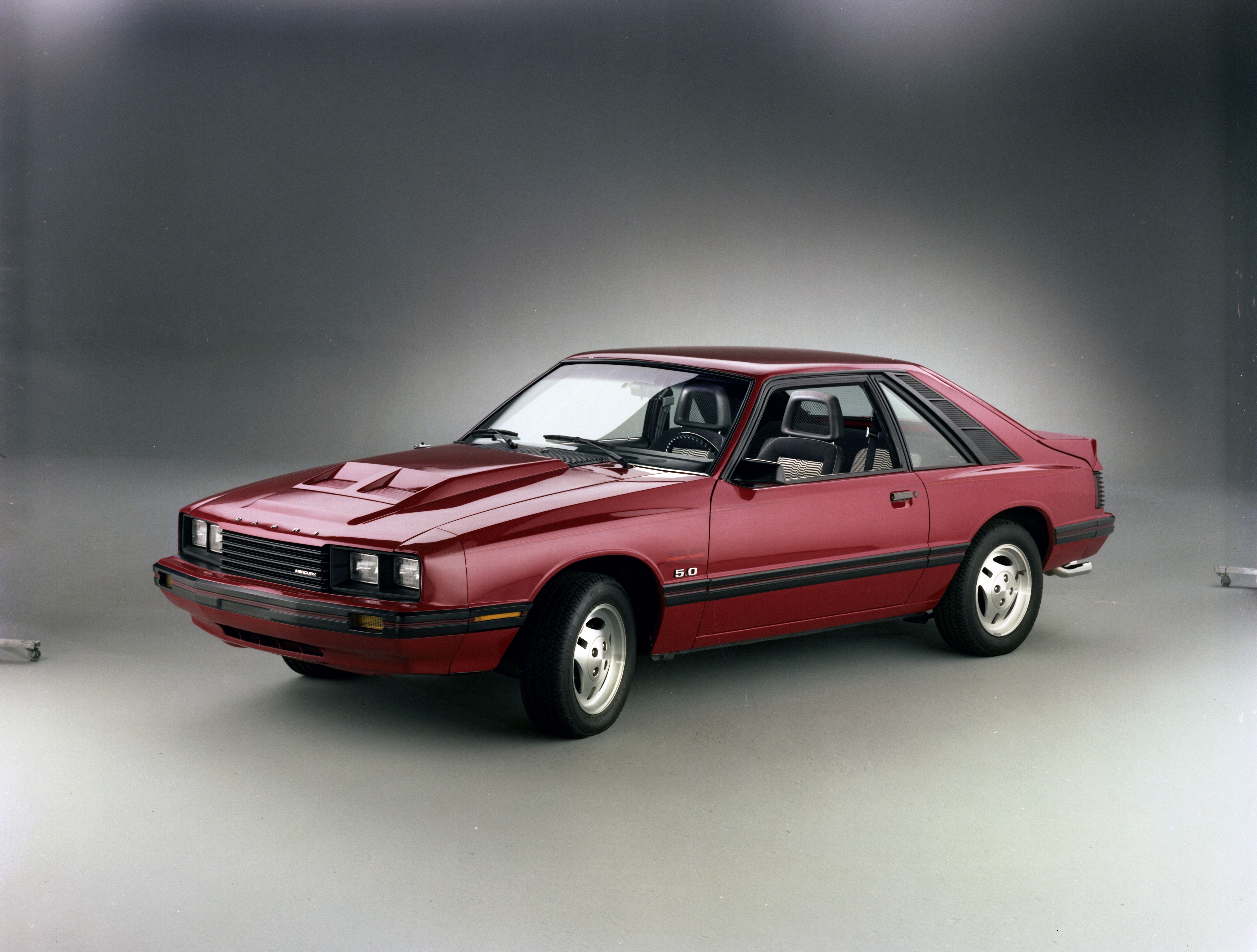When you think Ford, you think the GT40 or the Mustang, both of which American models with great heritage. Before the Mustang became global, however, Europe had its own equivalent of the pony car. The Ford Capri was a rear-wheel-drive, 2+2 coupe that could be both a commuter and a weekend warrior. Although the Capri name, as we know it, has been retired, it has a long history and we are about to share with you everything we know about the car, sometimes referred to as “the European Mustang”.
European car, but with an American name
Before Ford’s “European Mustang”, the name “Capri” was used on a few other cars. It was used on quite a few Ford models, since the 1950s, the first of which was the 1950 Lincoln Cosmopolitan Capri. Later it was used on the 1952 Lincoln Capri. The Ford Capri wasn’t even the first European car to use the name, as that achievement goes to the 1961 Ford Consul Capri.
Regardless of which car used the name, they all had one thing in common – they were two-door coupes and convertibles. It was clear that the name was associated with performance and exoticism and eventually, it was deemed fit for the European pony car.
It was not supposed to be called the “Capri”
On a concept level, it was decided that the car would be called the Ford Colt. However, Mitsubishi owned the rights to the “Colt” name. Nevertheless, Ford took Mitsubishi to court, to try and release the name, but to no avail. Given that the Capri name was used on a variety of two-door cars over the years, it was decided to go with that. It also evoked thoughts of exotic Mediterranean towns, just like the Cortina.
Development started in the US
In 1964, the Ford Mustang came and took the American market by storm. Recognizing the potential, the European arm of Ford wanted a Mustang of its own. Most sources point to Phil T. Clark being the first designer to style the Capri. Phil T. Clark was one of the key designers who worked on the Mustang and he reported to Ford Motor’s American division. This means that development of the Capri started out in the US. Later, T. Clark and the concept were sent to Europe where Ford’s UK and German divisions collaborated.
Designed on a budget
The development budget for the Ford Capri was £20 million. This meant that many parts from other models needed to be used. Many bits and pieces came from the Corsair, while the taillights and steering were taken straight from the Escort.
On stock before the official unveiling
The Capri started production in November 1968, as a 1969 model year. The idea was to have at least one Capri in every showroom, before the official unveiling at the Brussels Motor Show, in January 1969. The Capri stayed hidden in a wooden box until the last day of the show.
In production for 18 years
The Capri was produced from 1968 to 1986. Throughout the period, it had three generations, each with its fair share of base and performance versions. The Capri Mk I was made from 1968 to 1973, while the Mk II was produced between 1974 and 1978. March 1978 marked the beginning of the end, as the third-generation Capri came out. It was produced until 1986.
A wide variety of engines
The Capri was made with affordability in mind. In 1969, it had a starting price of £890, which is £15,000 ($21,169) at the current exchange rate. Just like the Mustang, the Capri was meant to be a mass-produced coupe, so it was offered with a wide variety of engines. Sadly, because of its affordability, most versions of the Capri weren’t particularly quick.
The British and German Ford factories produced different versions of the Capri, powered by different engines. The German-made Capri Mk1 was powered by the Ford Taunus V4 engines with a 1.3, 1.5, and 1.7 liters of displacement, while the British-made cars were equipped with 1.3 and 1.6-liter Ford Kent inline-four engines. The base car took a whopping 23.0 seconds to reach 60 mph (97 km/h) and had a top speed of just 84 mph (135 km/h). The Ford Capri Mk II later introduced the 1.3-liter Crossflow unit, as a base engine, followed by the 1.6 and 2.0-liter units from the Ford Pinto.
The range-toppers had a 2.0-liter Essex V4 for the UK market, while the German spec cars got the 2.0-liter Cologne V-6. The end of 1969 marked the appearance of two new performance versions – the German 2300-GT with a two-barrel carburetor and 125 horsepower (92 kilowatts) and the British 3000-GT with the 3.0-liter Essex V-6 with 138 horsepower (102 kilowatts). The 3000-GT had a 0 to 60 mph time of 9.2 seconds and a top speed of 114 mph (183.5 km/h). Sadly, most of them were sold with automatic gearboxes that robbed performance even more.
|
Engine |
3.0-liter Essex V-6 |
|---|---|
|
Power |
138 HP |
|
0 to 60 mph |
9.2 seconds |
|
Top Speed |
114 mph |
The Ford Capri 2600-GT
In 1971, a new range-topper was added to the lineup. It used a new fuel-injected version of the Cologne V-6, displacing 2.7 liters. It developed 150 horsepower (110 kilowatts). This version became the basis for a Group 2 RS2600, which won the European Touring Car Championship, in 1971 and 1972.
Ford Capri RS-3100
The previously-mentioned Group 2 Capri, based on the 2600-GT, was beaten by the BMW 3.0 CSL, in 1973. In response, the RS-3100 was created. It used a bored-out to 3.1 liters carbureted Ford Essex V-6 engine, which produced 150 horsepower and 187 pound-feet (254 Nm). Despite having the same power output as the 2600-GT, it had a lower stance and less weight. The RS-3100 was all about handling and aerodynamics.
|
Engine |
3.1 liters carbureted Ford Essex V-6 |
|---|---|
|
Power |
150 HP |
|
Torque |
187 LB-FT |
Other performance versions
Each of the three Ford Capri generations had its own go-fast versions. In addition to the aforementioned, there are numerous other variants. These include the 1982 Capri 2.8 Injection with 162 horsepower and 162 pound-feet (220 Nm), The 1978 Capri Perana, also known as the Mako Capri, which has a Windsor 4.9-liter V-8, which produces 250 horsepower and 285 pound-feet (386 Nm).
There were also the 2.8, Tickford Turbo, Turbo Technics versions all of which based on the 2.8 fuel-injected variants. They produced between 188 and 230 horsepower. The most powerful of them allowed for a 0 to 60 mph (97 km/h) time of under 6.5 seconds, with a top speed of over 137 mph (220 km/h).
UK-exclusive
Although the Capri was officially produced until 1986, all cars made from 1984 onwards were right-hand-drive only. The 1.6 and 2.0-liter normally-aspirated base versions were rebranded as “Laser”.
Ford Capri 280
Also UK exclusive was the Capri 280 - the last limited edition of the Ford Capri. It was nicknamed “Brooklands” after the distinctive shade of green, slapped on all 280 models. 500 of the cars were supposed to have turbocharged engines, modified by Turbo Technics, but that never happened. A total of 1,038 Capri 280 were built.
The Capri was ultimately a success
It seems Ford’s strategy to tailor the Capri to a wider audience paid off. In the first two years alone, Ford sold over 400,000 copies of the Capri. Although in 1976, UK production of the Capri was temporarily suspended, the “European Mustang” managed to mirror the success of the American pony car and by 1986, a total of 1,886,647 Ford Capri were made. The last car left the factory on 19 December 1986. It was one of the “Brooklands” cars, which had a £12,000 price tag. The cars were on sale at showrooms until 1988, with the last Capri 280 being registered on 20 November 1989.
Production expanded to other parts of the world
The Ford Capri quickly gained popularity and, in 1969, production expanded to Australia. One year later – in 1970 – the Capri started being produced in South Africa as well. Australia’s proximity to New Zealand and Japan made it easier to export the car to those countries. New Zealand and Japan-spec Ford Capri had the 1.6 and 2.0-liter engines. The 2.0-liter unit, in particular, proved to be a hit on these two markets, despite Japan's heavier taxation on bigger engines.
Exported to the US
Some of the German-built Ford Capri were exported to the US where they were sold under the Mercury division, so as not to hinder sales of the Pinto (which it could have done). It was offered as an affordable compact coupe. Sadly, all Capri imported to the US later received the hideous plastic bumpers, mandated by the government.
Ford stopped importing the Capri into the US, in 1997, due to the US dollar being unfavorable for US imports.
The Capri was a marketing paradox
The Ford Capri wasn’t exactly a global model, the same way the current Mustang is, but it was still sold on five continents. The way it was advertised on different markets is quite interesting. On the European market, Ford capitalized on the Capri’s inspiration from the Mustang, advertising it as “A bit of Americana”, while in the US they advertised the Capri as a European exotic.
Ford Capri Convertible?
Yes, there were some, although not nearly as many as the coupe versions. Ford approached Crawford Cars, in order to build a drophead version of the Capri. Abbotts of Farnham – well-known for their Ford Consul, Zephyr, Zodiac, and Corsair estates (station wagons) also built its own Capri convertible, called the Abbot Convertible. The Crawford Capri was considered more good-looking and, ultimately, more successful.
Crawford sold at least 37 cars, built under license by Crawford’s German partner. The top-of-the-line Crawford Capri 3.0-liter V-6 was 20 percent more expensive than the Jaguar E-Type at the time. At the same time, Abbot managed to build only seven of the intended 50 drop-top Capri.
Ford’s first hatchback
Although the Ford Capri enjoyed good sales throughout its entire production cycle, sales started to drop around 1973. The Mk II Ford Capri was introduced in 1974 and brought a new feature – a hatchback deck lid. The hatchback body style had already started gaining popularity by the mid-1970s and Ford saw an opportunity to make their European pony car more practical.
The second-generation Capri scored a shorter front-end, which freed up more interior space and a new more modern dashboard.
Mercury Capri Mk II
In 1979, Ford’s North American division brought back the Mercury Capri, but this time it was a rebadged Ford Mustang Foxbody. The Capri scored a bespoke front fascia, darkened taillights, discrete flared wheel arches, and a new “bubble back” read window. The second-generation Mercury Capri ran until 1986, just like its European sibling, and just like the Ford Capri, it was powered by a variety of engines, ranging from a 2.3-liter inline-four to the iconic 5.0 V-8.
The hot hatchback killed the Capri
By the mid-1980s, cars like the Golf GTI and Ford’s own Fiesta XR-2, Escort XR-3, and Sierra XR-4 were much more popular than the outdated coupe. The hot-hatch formula offered similar or better performance, combined with a lot more practicality.

